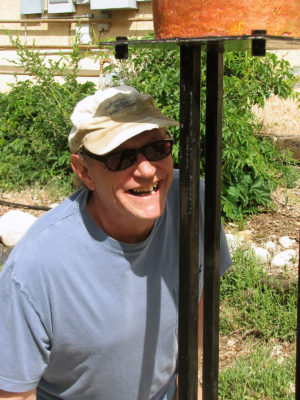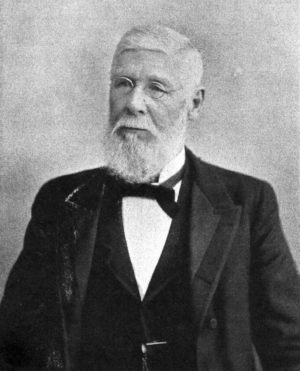By George Sibley
Over here on the west slope of Central Colorado, we continue to be concerned about the evidence indicating the probability of a changing climate, despite official assurances from above that there is no such thing, or if there is, it is nothing to be concerned about.
We, on the other hand, have experienced two-plus decades of average monthly temperatures generally rising, shorter and warmer winter seasons (interrupted with extreme events of precipitation and cold), earlier onsets of spring stream runoff (salvaged a few times by cold, wet, late springs), stream runoffs failing to meet projections based on snowpack water equivalents (suggesting increasing snowpack sublimation), and higher measured evapotranspiration from agricultural fields (meaning more water expended for the same growth). These local phenomena are generally consistent with western climate projections and the findings of larger regional studies – like one issued in late February – indicating that, thus far in the 21st century, the Colorado River’s total water supply has decreased 19 percent from the annual averages for the 20th century.
This could just be an extended “natural hot dry cycle,” as a small clutch of scientists continue to insist. But even if that were its real extent, it warrants some level of response from those of us in the arid West who depend on always erratic water supplies increasingly stressed by relentlessly growing demands. Down here on the ground where this stuff is actually happening, we don’t have the luxury of abstraction enjoyed by the Washington government where reality is reduced to budget numbers and alternative facts.
So, given that the United States – still the largest producer of greenhouse gases globally* – is not going to be participating in a coordinated way in global efforts to mitigate (prevent) further climate change, at the local level we are left with the option of figuring out how to best adapt to the changes which may come as projected, as well as those changes already here.
But how do you respond in advance to situations you cannot predict with any degree of certainty? A U.S. Forest Service technical manual (from back a few years when the federal government still accepted the probability of a warming climate) acknowledged this question. Accepting the “substantial uncertainty regarding temporal and spatial impacts” that “will differ considerably across regions,” it suggested “focusing management actions on improving and sustaining watershed resilience (as) a sound response to climate change,” especially actions to “restore degraded watershed processes.”
But isn’t “restoring” putting things back the way they were? And is that an effective strategy in a time of major change from the way things were? Most water managers today are saying that the past is no longer a dependable predictor for the future.
Questions like that lured me over to the Front Range in early March, for the annual conference of the Central Rockies chapter of the Society for Ecological Restoration, and its spinoff, High Altitude Revegetation Workshop, at Colorado State University.
The conference interested me because I have become engaged in a restoration project here in the Upper Gunnison headwaters. Inspired by The Nature Conservancy and TNC conservation planner Betsy Neely, the project is the elimination of gullies in high meadows and pastures, in order to restore wet meadow ecosystems in eroded places where water tables have been lowered enough to change the plant communities to drier systems, with resulting stresses on both wildlife and livestock. One such wildlife is the Gunnison Sage Grouse, a unique subspecies that we are trying hard to keep off the endangered species list here.
The Upper Gunnison River Water Conservancy, for which I am a board member, is playing a growing role in this project, as The Nature Conservancy appropriately tries to turn the project over to the local community. Does this have anything to do with climate change, or am I, as usual, digressing? It is at least consistent with the strategy suggested in the Forest Service manual: we are working to “restore degraded watershed functions.” The little bird is, in this sense, just the proverbial canary in the mine. If we can bring back the grassy wet-meadow habitat, we will also be holding more water in the ground for gradual release, rather than letting it be channeled down the gullies and on out of the valley quickly. “Filling up the sponge” – as another participant, Nathan Seward of Colorado Parks and Wildlife, puts it – will help the young grouse chicks find food and cover, but it will also benefit other wildlife and livestock, and will store more groundwater for late-season release.
At any rate, this project at least provides a positive local antidote to the heavy bad weather in the cultural environment, and that got me to the ecological restoration conference, which blew into my consciousness like a spring chinook. People actually doing constructive things, and the T-word was never mentioned, except with reference to the need to “find additional sources of funding for projects.”
[InContentAdTwo] One thing that surprised me was the relative youth of most of the presenters – an average age closer to 35-and-under than to the 55-and-up I’m used to at water-related events. Some of them were students, or recent students reporting on course projects that have carried over into their working lives. Some presenters were professors from all over the country; others were working professionals – like our own Andrew Breibart of the Upper Gunnison Bureau of Land Management office.
The sessions were primarily clusters of presentations broken into major natural categories (forests, grasslands, wetlands and streams, wildlife) or cultural pursuits (monitoring, mine reclamation, partnerships and collaboration, and some case studies). I learned from multiple perspectives that no one loves cheat grass, that sage grouse and forests everywhere are suffering from what we used to be allowed to call climate change, that the tamarisk beetle really doesn’t want to eat anything but tamarisk leaves, that getting volunteers organized for restoration work at the local level is a challenge everywhere, being dealt with more creatively some places than others. And in a time of change, what is a “weed?”
I could go on and on. But the question that sent me there – What is restoration in a time of global change? – was never too far from the surface of the discussion, and was directly addressed by a couple of keynote speakers. Dr. Katharine Suding (University of Colorado, Boulder) observed that despite good intentions, restoration efforts can do damage, especially in a time of change, that sometimes to do nothing while waiting for the nature of a place to make some choices for the future is the best approach. She described several different responses to grassland restoration in the vicinity of Los Angeles, each response unique to specific measured levels of nitrogen from autos.
Dr. Eric Higgs (University of Victoria) – a student of philosophy before he became a student of landscapes and ecosystems – focused his talk on mountain landscapes, which he called “sentinels showing early and significant signs of change.” He saw novel ecosystems emerging in the northern Rockies where he worked, and told us to work first to understand how these “new natures” sustain us, how they challenge us, and “how we can steward them while respecting both people and nature.” He believes that restoration work can only be truly effective if the local human communities get actively involved in it.
Learning by doing is a phrase that has emerged out of the 2012 Colorado River Cooperative Agreement between Denver Water and the thirty-some utilities, recreational interests, irrigators and other water users in the Upper Colorado tributaries (primarily the Fraser and Blue Rivers) from which the Front Range diverts half a million acre-feet of water annually. The phrase refers to Denver Water’s investment of money and expertise to the West Slope entities in exchange for a little more water (18,500 acre-feet in good water years only), some of which will be restoration of streams badly degraded by previous transmountain diversions.
Learning by doing is in the spirit of the ecological restoration as hashed out at the conference – although learning while doing might be even better. In a time of change, what we do to restore ecological functions in places we have helped degrade is going to create new places, not restore the same old ones, so working incrementally and stopping often to look and listen behooves us. The 20th century was the time of big bold strokes like Hoover or Blue Mesa Dams; in the 21st century we are building “one-rock dams” (one rock high) in the headwaters.
In closing, I’ll remind you that Earth Day this year (April 22) is going to be held in conjunction with a Celebrate Science event. A March for Science to be more precise, but I think I’d rather just celebrate science the way I found it with all those folks down at Fort Collins a few weeks ago: science as discovery, as intelligent adventuring, as learning absorbed while doing what needs to be done in Central Colorado’s wonderful valleys. Just hunker down under the hard rains from Washington, and strike back by helping do something intelligent. ?
* Even though China generates more greenhouse gases today than the United States, much of their economic activity is driven by U.S. markets, which gives us a big stake in their pollution.
George Sibley builds little dams for big ideas in the Upper Gunnison valleys.


